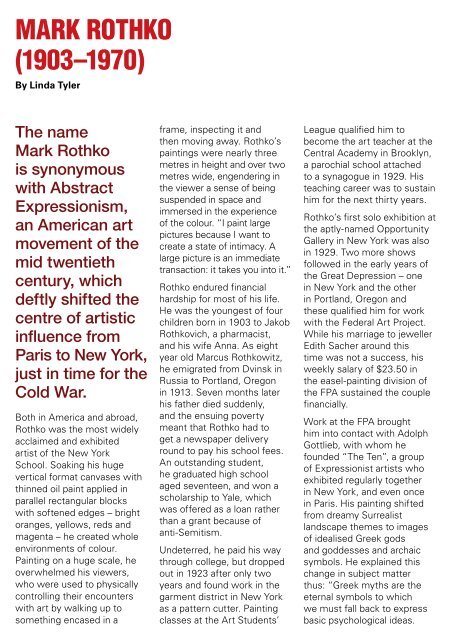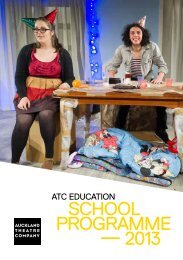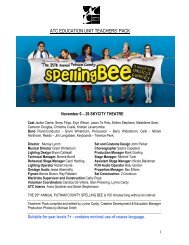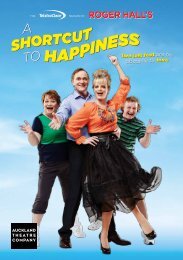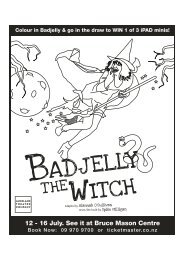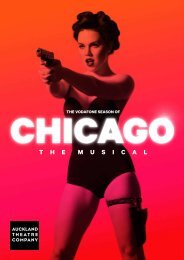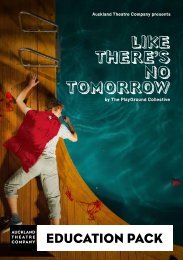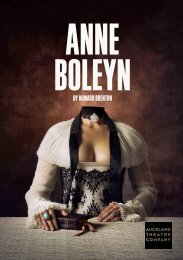You also want an ePaper? Increase the reach of your titles
YUMPU automatically turns print PDFs into web optimized ePapers that Google loves.
mARK RoTHKo<br />
(1903–1970)<br />
<strong>By</strong> Linda Tyler<br />
The name<br />
Mark Rothko<br />
is synonymous<br />
with Abstract<br />
Expressionism,<br />
an American art<br />
movement of the<br />
mid twentieth<br />
century, which<br />
deftly shifted the<br />
centre of artistic<br />
influence from<br />
Paris to New York,<br />
just in time for the<br />
Cold War.<br />
Both in America and abroad,<br />
Rothko was the most widely<br />
acclaimed and exhibited<br />
artist of the New York<br />
School. Soaking his huge<br />
vertical format canvases with<br />
thinned oil paint applied in<br />
parallel rectangular blocks<br />
with softened edges – bright<br />
oranges, yellows, reds and<br />
magenta – he created whole<br />
environments of colour.<br />
Painting on a huge scale, he<br />
overwhelmed his viewers,<br />
who were used to physically<br />
controlling their encounters<br />
with art by walking up to<br />
something encased in a<br />
frame, inspecting it and<br />
then moving away. Rothko’s<br />
paintings were nearly three<br />
metres in height and over two<br />
metres wide, engendering in<br />
the viewer a sense of being<br />
suspended in space and<br />
immersed in the experience<br />
of the colour. “I paint large<br />
pictures because I want to<br />
create a state of intimacy. A<br />
large picture is an immediate<br />
transaction: it takes you into it.”<br />
Rothko endured financial<br />
hardship for most of his life.<br />
He was the youngest of four<br />
children born in 1903 to Jakob<br />
Rothkovich, a pharmacist,<br />
and his wife Anna. As eight<br />
year old Marcus Rothkowitz,<br />
he emigrated from Dvinsk in<br />
Russia to Portland, Oregon<br />
in 1913. Seven months later<br />
his father died suddenly,<br />
and the ensuing poverty<br />
meant that Rothko had to<br />
get a newspaper delivery<br />
round to pay his school fees.<br />
An outstanding student,<br />
he graduated high school<br />
aged seventeen, and won a<br />
scholarship to Yale, which<br />
was offered as a loan rather<br />
than a grant because of<br />
anti-Semitism.<br />
Undeterred, he paid his way<br />
through college, but dropped<br />
out in 1923 after only two<br />
years and found work in the<br />
garment district in New York<br />
as a pattern cutter. Painting<br />
classes at the Art Students’<br />
League qualified him to<br />
become the art teacher at the<br />
Central Academy in Brooklyn,<br />
a parochial school attached<br />
to a synagogue in 1929. His<br />
teaching career was to sustain<br />
him for the next thirty years.<br />
Rothko’s first solo exhibition at<br />
the aptly-named Opportunity<br />
Gallery in New York was also<br />
in 1929. Two more shows<br />
followed in the early years of<br />
the Great Depression – one<br />
in New York and the other<br />
in Portland, Oregon and<br />
these qualified him for work<br />
with the Federal Art Project.<br />
While his marriage to jeweller<br />
Edith Sacher around this<br />
time was not a success, his<br />
weekly salary of $23.50 in<br />
the easel-painting division of<br />
the FPA sustained the couple<br />
financially.<br />
Work at the FPA brought<br />
him into contact with Adolph<br />
Gottlieb, with whom he<br />
founded “The Ten”, a group<br />
of Expressionist artists who<br />
exhibited regularly together<br />
in New York, and even once<br />
in Paris. His painting shifted<br />
from dreamy Surrealist<br />
landscape themes to images<br />
of idealised Greek gods<br />
and goddesses and archaic<br />
symbols. He explained this<br />
change in subject matter<br />
thus: “Greek myths are the<br />
eternal symbols to which<br />
we must fall back to express<br />
basic psychological ideas.<br />
They are the symbols of<br />
man’s primitive fears and<br />
motivations, no matter which<br />
land or what time… And<br />
modern psychology finds them<br />
persisting still in our dreams,<br />
our vernacular, and our art,<br />
for all the changes in outward<br />
conditions of our life.” In 1938<br />
he received his citizenship<br />
papers and two years later<br />
officially shortened his name to<br />
Rothko. Soon after he divorced<br />
Edith and married Mary Alice<br />
(Mell) Beistle, a children’s book<br />
illustrator ten years his junior.<br />
At the end of WW2, Peggy<br />
Guggenheim presented<br />
Rothko’s recent work in a<br />
solo show at her ‘Art of This<br />
Century Gallery’. When that<br />
gallery closed, Betty Parsons<br />
became his New York dealer<br />
while he lived in California and<br />
taught at the California School<br />
of Fine Arts in San Francisco.<br />
His daughter Kate, was born<br />
in 1950 and the family moved<br />
back to New York, where he<br />
was mocked by the bohemian<br />
painters who inhabited the<br />
lofts of Greenwich Village.<br />
Despite this, his friendship<br />
with Alfred Barr, Director<br />
of the Museum of Modern<br />
Art, paid off hugely when<br />
Barr persuaded the architect<br />
Philip <strong>John</strong>son to donate a<br />
Rothko painting to MOMA.<br />
But the critical endorsement<br />
of his work didn’t leverage into<br />
sales, and financial pressures<br />
led him to return to full-time<br />
teaching. After a stint at Tulane<br />
University in New Orleans, the<br />
Rothko’s returned permanently<br />
to New York where a son,<br />
Christopher, was born in 1963.<br />
Rothko was caustic in<br />
his criticism of public art<br />
institutions. He had been<br />
included in the Whitney<br />
Annual, an important public<br />
gallery survey in 1945,<br />
but had little respect for<br />
the Whitney curators. He<br />
refused to be in the 1947<br />
Annual, saying that he had<br />
no wish to be shown “next<br />
to mediocrity”. In 1952<br />
he vetoed the sale of two<br />
paintings to the Whitney,<br />
which he referred to privately<br />
as “a junkshop”. That year,<br />
he also fell out with Dorothy<br />
Miller, curator of Fifteen<br />
Americans, a group exhibition<br />
at the Museum of Modern Art<br />
by sending her many more<br />
paintings than those she had<br />
chosen, and interfering with<br />
the installation of the works.<br />
His relationships were better


